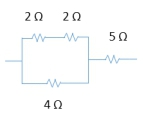Combining resistors is an essential skill in circuit analysis, allowing you to simplify complex circuits into a single equivalent resistor. Resistors can be connected in two primary configurations: series and parallel. In a series connection, resistors are aligned end-to-end, creating a single path for current flow. Conversely, in a parallel connection, resistors are positioned on separate branches, allowing current to split between them.
To find the equivalent resistance in series, you simply add the individual resistances together. The formula for this is:
$$ R_{eq} = R_1 + R_2 + R_3 $$
For example, if you have three resistors with values of 1 ohm, 2 ohms, and 3 ohms, the equivalent resistance would be:
$$ R_{eq} = 1 + 2 + 3 = 6 \text{ ohms} $$
In contrast, the equivalent resistance for resistors in parallel is calculated using the following formula:
$$ \frac{1}{R_{eq}} = \frac{1}{R_1} + \frac{1}{R_2} + \frac{1}{R_3} $$
This equation indicates that the reciprocal of the equivalent resistance is the sum of the reciprocals of the individual resistances. For instance, if you have two resistors of 1 ohm and 4 ohms in parallel, the calculation would be:
$$ \frac{1}{R_{eq}} = \frac{1}{1} + \frac{1}{4} = 1 + 0.25 = 1.25 $$
To find \( R_{eq} \), you would then take the reciprocal:
$$ R_{eq} = \frac{1}{1.25} = 0.8 \text{ ohms} $$
When combining resistors, it's important to note that the equivalent resistance in a series connection is always greater than the individual resistances, while in a parallel connection, the equivalent resistance is always less than the smallest individual resistance. This behavior is due to the nature of current flow; in series, the current must pass through each resistor sequentially, while in parallel, the current can choose multiple paths, effectively reducing the overall resistance.
To illustrate this with an example, consider a circuit with four resistors. You would first identify which resistors can be combined based on their configuration. If two resistors are in parallel, you would calculate their equivalent resistance using the parallel formula, then combine that result with any series resistors that follow. This systematic approach allows you to simplify the circuit step by step until you arrive at a single equivalent resistor.
In summary, mastering the combination of resistors in series and parallel is crucial for analyzing electrical circuits effectively. Understanding the underlying principles and formulas will enable you to tackle complex circuit problems with confidence.




